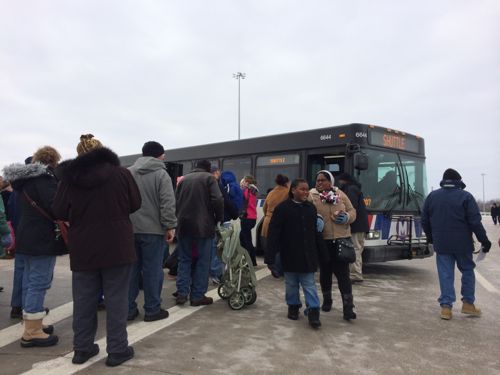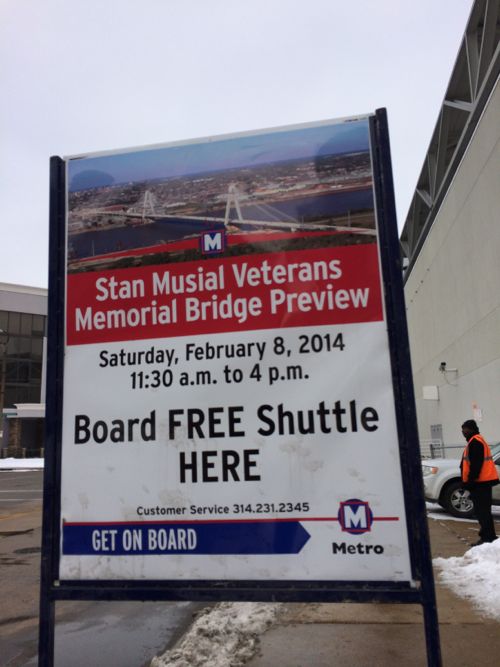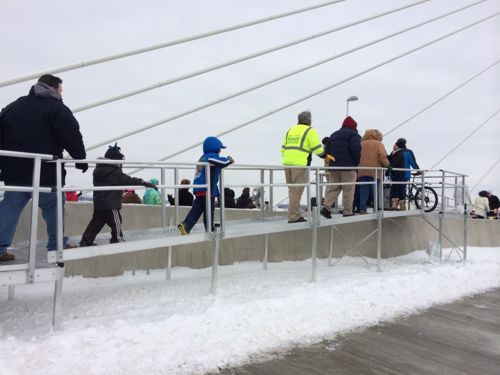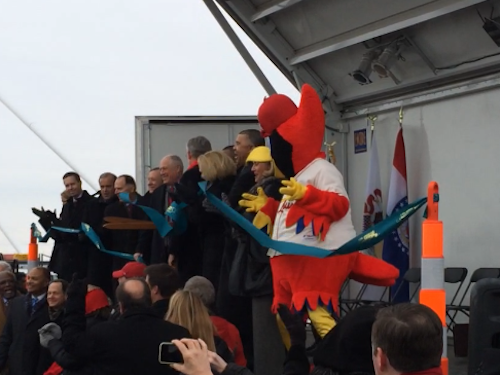The Indoor Mall No Longer Retail King
In the St. Louis region a number of once bustling malls are gone or are on life support, let’s take a look at some examples.
St. Louis Centre
In the 1980s St. Louis Centre was a briefly-popular mall downtown, now it’s a parking garage with sidewalk-facing retail.
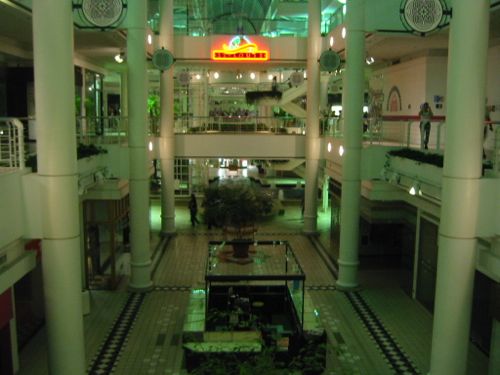
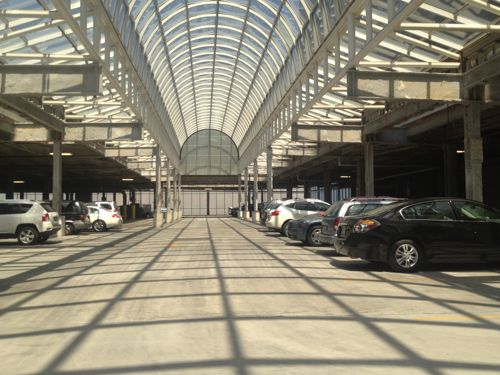
Union Station
Union Station came online at the same time, but the retail aspect faded after a few years. The new owner plans to use the former retail area for meeting/convention space.
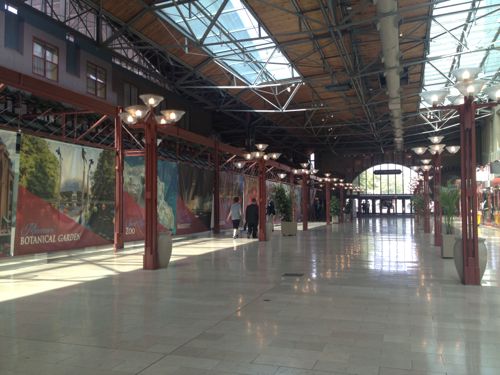
Jamestown Mall
Jamestown Mall in North County is still open, though it was closed twice this winter due to low indoor temperature.
After nearly a three-week closure, Jamestown Mall reopened on Friday.
The mall was shut down on December 20 because parts of the building were not properly heated.
The closure did not affect Macy’s, Sears Tire and Auto Center, JC Penney or Dillard’s. (Fox2)
This mall has been on life support for years, in 2011 there was talk of razing most of the mall and building a New Urbanist village on the site.
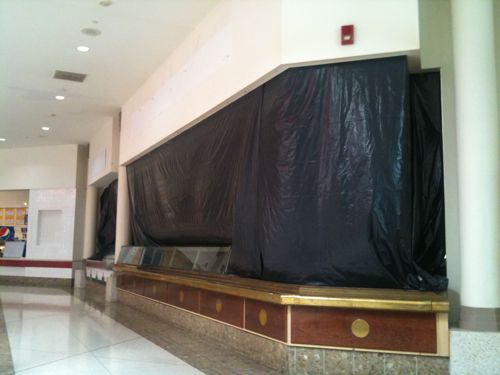
Northwest Plaza
Originally built as an outdoor mall, enclosed later, finally closed and is being replaced:
The crowds and stores were long gone. Northwest Plaza, once billed as the world’s largest shopping center, stood decaying at one of the busiest intersections in metro St. Louis, done in by new malls in more upscale areas.
Brothers Robert and P. David Glarner announced plans to buy the mall at Lindbergh Boulevard and St. Charles Rock Road and began seeking tax money for most of the redevelopment costs — nearly $50 million. (stltoday)
The site will be known as The Crossings at Northwest.
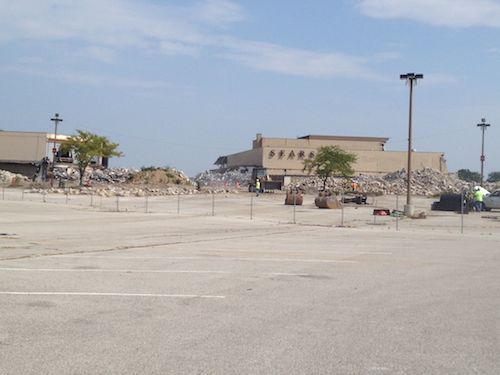
River Roads Mall
River Roads Mall was razed but only the edges of the site have seen new development. See Former River Roads Mall Site Vacant, the Few New Buildings Aren’t Pedestrian Friendly
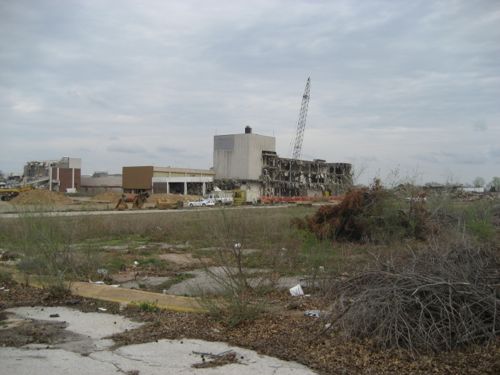
Crestwood Mall
Crestwood Mall, later renamed Crestwood Court, closed in July 2013:
It’s been more than a year since Chicago-based developer Centrum Partners LLC introduced plans to convert the dilapidated Crestwood Court mall into an entertainment plaza.
A couple of barricades and piecemeal auctions of mall fixtures have been the only sign of activity in Centrum’s $121.3 million redevelopment plan. That changes tonight, when the St. Louis area’s oldest mall officially closes its doors to the public for the last time. (stltoday)
As far as I know redevelopment plans have stalled. For a few years the mall spaces were leased for local artists at little to no rent.
West County Center
This mall opened in 1969, blighted & razed in 2001, reopened in 2002. Since then a department store was razed and a new outdoor-focused entry was built that includes restaurants and a bookstore. Inside the original high standards from 2002 have been lowered.
And my childhood mall in Oklahoma City:
Forty years ago today Crossroads Mall opened not far from my house, it was the largest mall in Oklahoma.
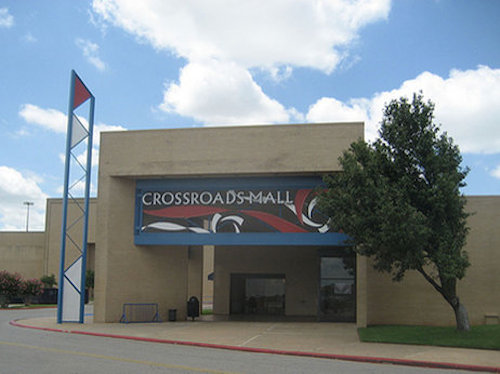
When I visited in August 2009 all four anchor department stores had closed and many interior spaces were vacant. In 2010 NPR’s All Things Considered did a story on the mall, using my image with permission. See Why The Fed Owns A Mall In Oklahoma City.
At the time I thought Crossroads was dead. Crossroads was sold and the new owners have renamed it Plaza Mayor at the Crossroads. Their concept is a focus on the hispanic population:
OKLAHOMA CITY, Oklahoma (April 25, 2013) – Something big is happening at Crossroads Mall in Oklahoma City, and it may not be what you think. When new owners, Raptor Properties bought the mall in late 2011, the most likely scenario was complete demolition. Luckily for Oklahoma, this original plan has taken a complete 180, and Raptor has partnered with The Legaspi Company to convert Crossroads Mall into Plaza Mayor at the Crossroads.
The change in paradigm will not attempt to resuscitate this mall into its original form, but rather re-imagine a new vision to take advantage of changing demographics. The partnership has unveiled its new plans to convert Crossroads Mall into the nation’s newest Hispanic cultural and commercial center. This has been a successful model, now seen all over the United States in such markets as Atlanta, Phoenix, Los Angeles and Fort Worth with similar properties.
The driving force behind many of these successful implementations has been California-based realty firm, The Legaspi Company. Raptor Properties has brought that experience and success to Oklahoma by partnering with this firm to oversee the implementation here in Oklahoma City.
Instead of relying on big department stores as the driving force behind traffic, the establishment of a cultural center with weekly programming now becomes one of the first building blocks in bringing families back to the property. This is good news to many cultural and arts organizations constantly struggling to find ways to deliver these types of programs to an under-served population. It is also good news to the Hispanic community seeking opportunities to teach their children more about their cultural heritage. Pilot events since last August have already resulted in a positive response. Each event has produced an average of 2-3 thousand patrons.
Sunday, March 31st, was no exception as the building will be hosted a 10,000-egg Easter Hunt for Hispanic families. The event sponsored by Homeland and Tyler Media was host to over 5000 people. That date also marked the official start of weekly cultural programming, featuring the state’s largest mariachi, Mariachi Orgullo de America.
On March 27th, Raptor announced the acquisition of the building that previously held Dillard’s to house a key element of this new model, the Mercardo. The Mercardo will be a 200+ vendor marketplace designed to serve as a business incubator, offering accessible retail space to a wide variety of products and services.
Other elements that will make the center a new home for Hispanic families will include many commodities focused on the comfort and entertainment of the oldest to the youngest members of these families. Such commodities include increased restroom capacity, increased soft seating including lounges, more restaurants, more play areas and kid’s activities, community services, a health services, financial services, and other non-traditional offerings that would seem out of place in mainstream malls.
Plans unveiled yesterday included architectural rendering of new entrances, a performing arts center, the retail business incubator, and other proposed uses. The hope is that Plaza Mayor will join the list of successful implementations throughout the country, and it is well on its way with 15 new contracts signed since the end of March, and increasing interest from additional national tenants.
From what I’ve seen online this strategy is working. I hope to see in person on a future visit to Oklahoma City.
— Steve Patterson


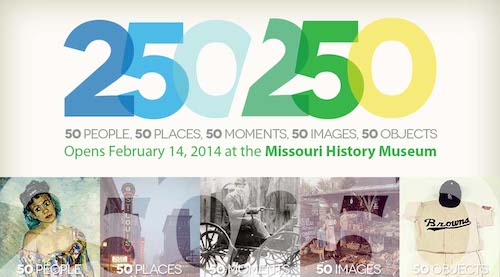 Happy 250th Anniversary Saint Louis!
Happy 250th Anniversary Saint Louis!